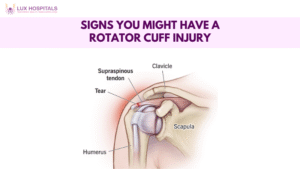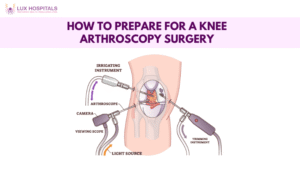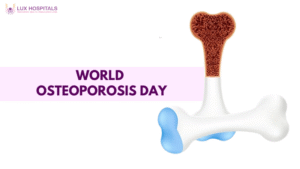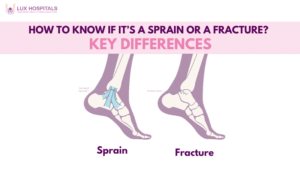Signs and Symptoms of an ACL Tear You Shouldn’t Ignore
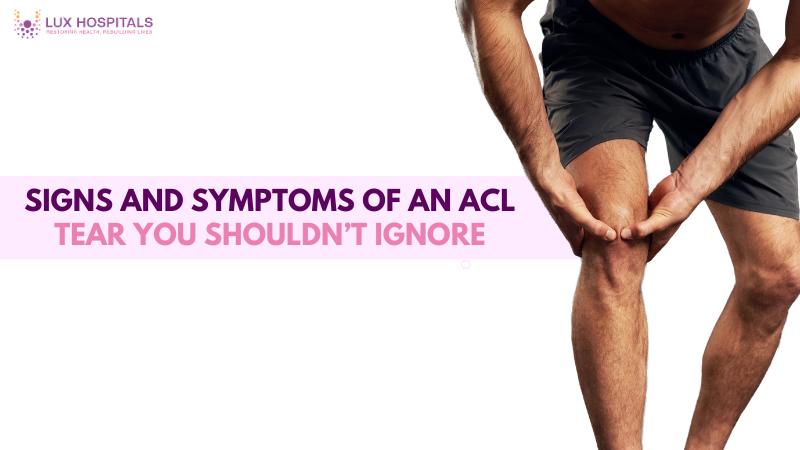
One of the most prevalent knee injuries, especially in athletes and active adults, is an ACL tear. The ACL, or anterior cruciate ligament, is essential for maintaining knee stability. When it tears, it can cause excruciating agony—and functional limitations. Understanding the initial indications and manifestations of an ACL Tear ensures timely treatment and prevents complications. This blog highlights the primary symptoms, when to seek medical help, and the risks of ignoring an ACL Tear.
Common Signs and Symptoms of an ACL Tear
An ACL tear is evident through a combination of noticeable warning signs. These symptoms often appear immediately after the injury and progress over hours or days. If you experience most of these signs together, it strongly suggests an ACL Tear that requires medical attention.
Sudden Popping Sound During Injury
One of the most common signs of an ACL Tear is a loud popping sound. This sound often occurs immediately after the injury has occurred.
Key details:
- The pop is caused by the ligament snapping suddenly.
- It is usually followed by immediate pain or discomfort.
- Ignoring this sound may allow further knee damage.
Intense Knee Pain
A sudden ACL Tear often results in sharp pain. The pain makes it hard to continue activities like running, jumping, or even walking.
What you may experience:
- Immediate sharp pain in the knee.
- Pain increases while bending or putting pressure.
- Relief may not come with simple rest or home remedies.
Rapid Swelling in the Knee
Swelling is a classic symptom that develops within hours of an ACL Tear. This occurs due to internal bleeding within the joint.
Key points to note:
- Swelling usually starts within 2–6 hours.
- The knee may feel tight or stiff.
- Ignoring swelling can lead to increased stiffness and a slower recovery.
Loss of Range of Motion
An ACL Tear often makes it difficult to move the knee properly. Patients notice they can’t fully bend or straighten their leg.
Signs include:
- Inability to stretch the knee completely.
- Difficulty bending the knee for daily activities.
- A “blocked” feeling in the joint.
Knee Instability or “Giving Way”
Knee instability is one of the strongest indicators of an ACL Tear. The knee may feel as though it’s slipping or is unable to support body weight.
Symptoms of instability:
- The knee suddenly gives out during movement.
- Feeling of weakness in the joint.
- Difficulty performing sports or simple walking.
Difficulty Bearing Weight
An ACL Tear makes it extremely painful to put pressure on the injured leg. Every day tasks become challenging.
You may notice:
- Trouble walking without limping.
- Pain when standing or climbing stairs.
- Inability to resume sports activities.
Bruising Around the Knee
Though not immediate, bruising is another symptom of an ACL Tear. It develops due to blood collecting around the injured area.
What to look for:
- Blue or purple discolouration around the knee.
- Bruises that spread over time.
- Tenderness along with swelling and pain.
Audible Clicks or Locking of the Knee
Mechanical problems often develop after an ACL Tear. These include clicking, locking, or catching sensations.
Reasons this happens:
- Torn tissue interferes with smooth joint movement.
- Loose fragments inside the joint cause friction.
- Severe ACL Tear cases often show this sign.
Long-Term Risks of Ignoring an ACL Tear
If left untreated, an ACL Tear can cause lifelong problems. Early treatment helps prevent the injury from worsening.
Possible long-term risks include:
- Chronic knee instability.
- Cartilage damage and meniscus tears.
- Higher chance of developing arthritis.
- Longer and more complicated recovery if surgery is needed later.
Conclusion
An ACL Tear is a serious injury that should never be ignored. Clear warning indicators include common symptoms such as discomfort, swelling, popping sounds, knee instability, and difficulty moving. Failing to address these indicators may have long-term consequences: arthritis and restricted movement. Seeking early medical examination and treatment ensures better healing outcomes and the preservation of your knee health. Your knees are vital for movement and daily living, so take immediate action if you suspect an ACL tear.
Frequently Asked Questions
An ACL Tear usually feels like a popping sound in the knee along with a searing pain. Swelling and stiffness follow within a few hours. Patients also report instability and difficulty moving.
Some people can still walk after an ACL Tear, but the knee feels weak and unstable. Running, jumping, or engaging in sudden movements becomes very difficult. Continuing to walk without treatment may worsen the injury.
Doctors perform physical tests, such as the Lachman test or pivot-shift test, to assess joint stability. MRI scans are often used to confirm an ACL Tear. These help identify the severity and guide the best treatment.
Ignoring an ACL Tear can cause repeated knee injuries and chronic instability. Over time, cartilage and meniscus damage may develop. This increases the risk of early arthritis and long-term pain.
Recovery depends on whether surgery is required. Non-surgical treatment may take several months, while surgical recovery typically lasts 6 to 12 months. Following rehabilitation programs ensures safe and complete healing from an ACL Tear.

















